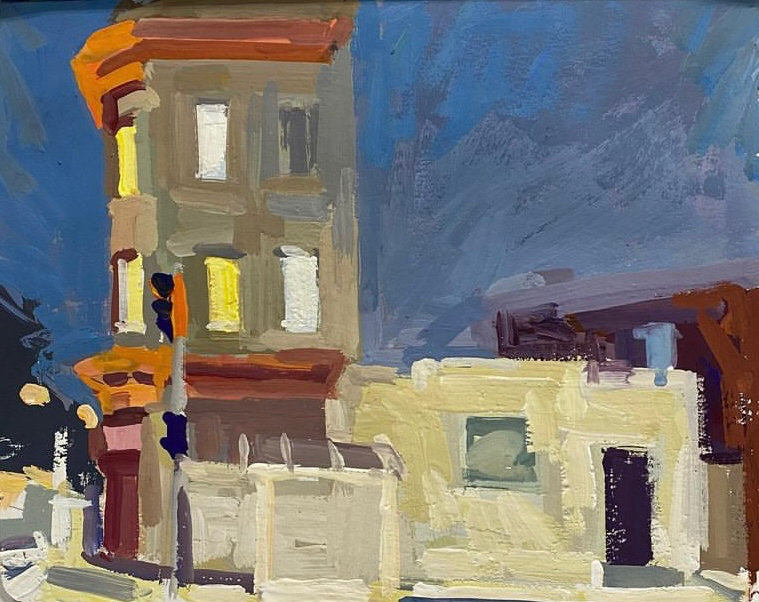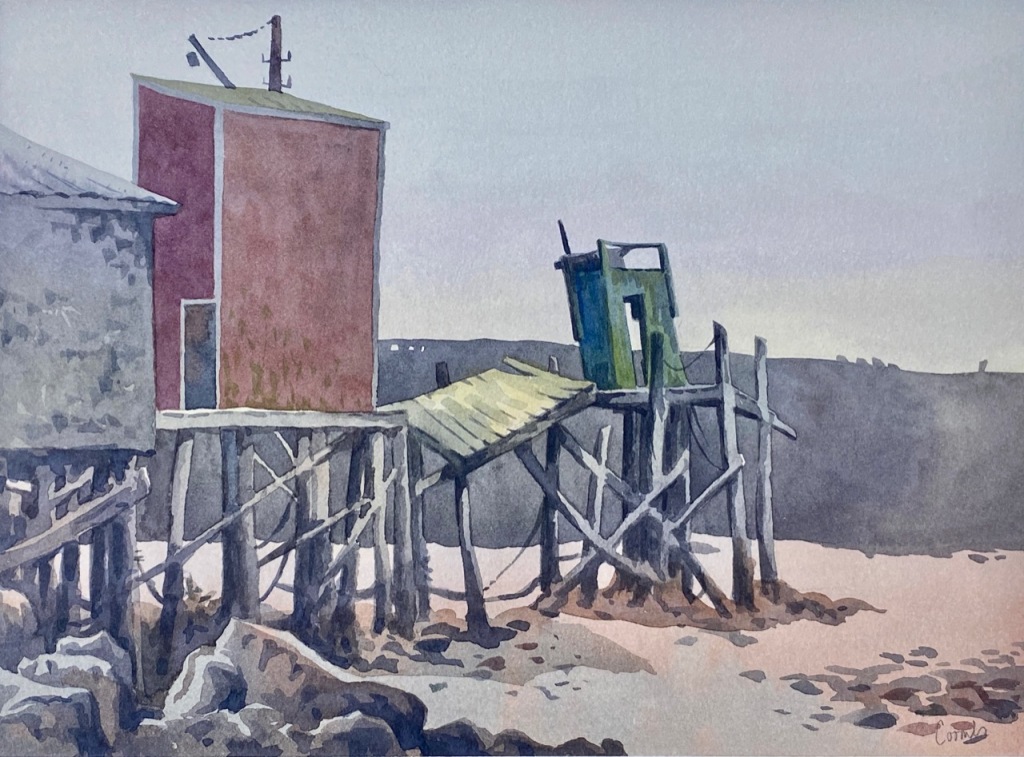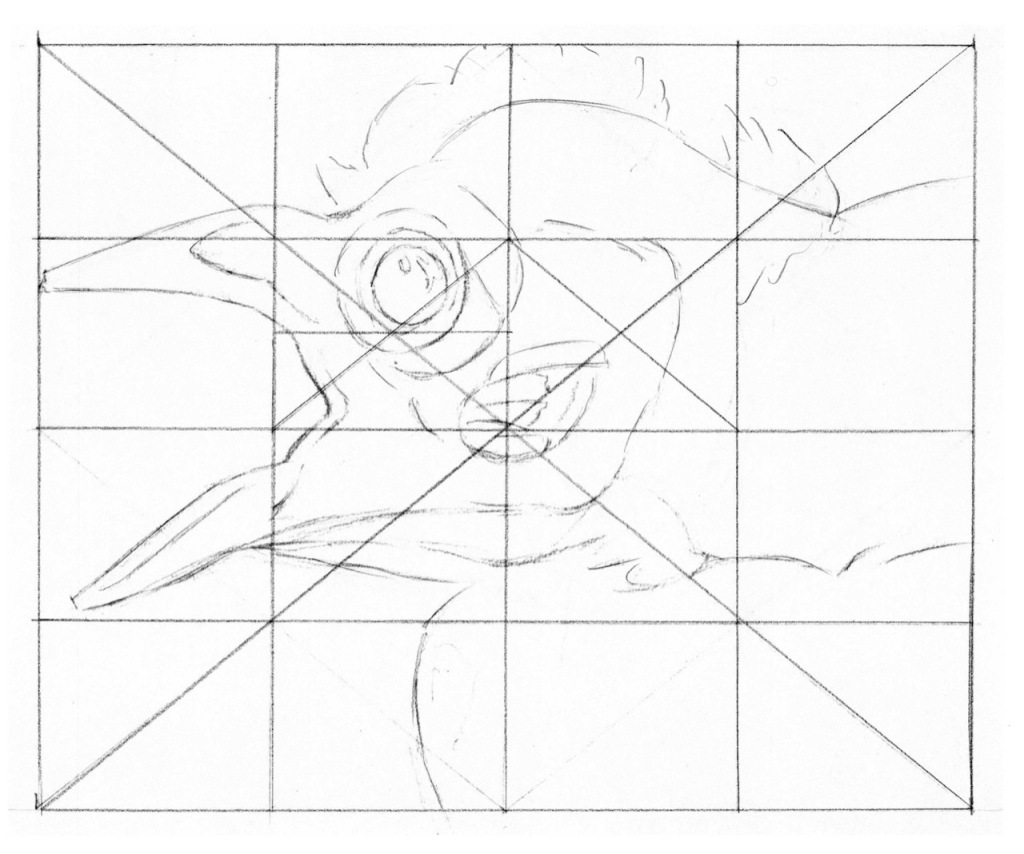East Hamilton is well worth a cultural visit until the end of November. The very cool The Capitol Bar is hosting an exhibition of watercolours and gouaches by Brian McPhee, alias 13brokenhorses. The artist will be present on Sunday, October 22 from 5-7pm.
Eight striking 22×30″ watercolour paintings command the room and draw the eye to the more intimate, but no less exciting, gouaches. The work is extremely affordable and Brian can be reached at 13brokenhorses@gmail.com for details.
This blog has always been about the educational and instructional side of art with some inevitable self-promotion of my own work. With that in mind, I’m going to tell you a bit about Brian’s process and materials and offer a few of my thoughts on his work.
First, a bit about Brian. He currently teaches painting at Sheridan College, where he is well-established. Past teaching gigs include OCADU, Humber and Seneca Colleges. As a young artist and student, he was very close to Chinkok Tan, a Toronto artist who has taught and painted in central and eastern Canada for decades. Brian came to my attention early on while I taught on Grand Manan Island. Many Grand Manan homes and cottages were adorned with postcards and prints of two powerful McPhee watercolours; one of the famous Swallowtail Lighthouse and peninsula and the other of clamdiggers harvesting at low tide.
Brian is a huge fan of Andrew Wyeth and Edward Hopper. As a young man, he once tracked down Wyeth at his rural, secluded home and was determined to show his armload of watercolours to the master. He was not warmly welcomed by Mrs. Wyeth and was told that Andrew was at work in his barn studio and NOT to be disturbed. Excitement and a youthful rashness prompted Brian to sneak over to the barn and look in the window. Andrew was quite elderly at the time but Brian describes him as ‘dancing’ as he painted. Mrs. Wyeth quickly spotted the young interloper and a very hasty retreat was in order.
The subject matter from the current exhibition is inspired by the Stipley neighbourhood of Hamilton and from a recent trip to Glasgow. A few images from Newfoundland are also featured. The two watercolours shown below are scenes from Trinity Bay in Newfoundland and have been hung side by side as a potential diptych.


Much of Brian’s career work has been painted ‘en plein air’ but these watercolours were completed in his studio, working upright at his easel. They are made from a blend of sketches and photo reference. The Arches Cold Press paper (140 lb.) is unstretched and clipped at the corners. He uses large Skoda Kolinsky brushes, #14 and #16. His colours mainly include a mix of Winsor & Newton and Lukas although he has worked with Da Vinci (the paints, that is) in the past. Paper white provides the luminosity of the lightest areas but there has been some recent experimentation with opaque white; in this case Buff Titanium from Daniel Smith. It’s been employed particularly in some of the skies in an attempt to create atmospheric conditions. A faint, preliminary pencil line can be seen in some of the lighter areas. Brian is an expert ‘shape reader’, who painted without any prior pencil strokes for many years but he now finds it helpful to map out the overall composition.
The small gouaches were made on a variety of papers, mostly in sketchbooks. He uses a variety of traditional gouache brands and is considering some trial use of the newer acrylic gouache. The brushes are inexpensive Princeton Velvettouch, #5 or #6. These little painting gems are only 7×10 to 8×11″ but they pack an immediacy and painterly quality that rivals the small oil panels created in the field by the Group of Seven. Also, can you see an echo of David Milne in the painting directly below? I sure can. Brian calls gouache ‘the Devil’s medium’! If that means that it’s a challenge then he’s definitely risen to the occasion.


Broad, expressive brushwork is a hallmark of Brian’s style. My art school mentor, the late Hugh Mackenzie, talked passionately about ‘the physical act of painting’. These gutsy, vivacious works exemplify that idea. If you know my work it will likely come as no surprise that I also see a fair bit of underlying geometry in these paintings and not just because most of the subjects are architectural. The work above is a good example.
My longtime and wonderful students may have a question for me. They’ve heard me harp about ‘edge issues’ in composition and how they can potentially distract the eye. Brian flirts with the edge frequently and, in doing so, he reminds me of the contemporary American painter, Mitchell Johnson. That’s a compliment. Johnson’s bold and colourful work, much of which is based on the urban environment, is quite often very tightly cropped and narrowly skirts the edges of the rectangle. Does it lend a powerful, dynamic quality to the work or does it bother the viewer? You decide. Despite my warnings to students, which I believe are valid and should be at least considered as one learns the basics of composition, I’m a big fan of the work of both Johnson and McPhee.
Drop by The Capitol Bar. If you can make it this Sunday, you’ll recognize Brian from the self-portrait below. In the meantime, view his website at http://www.13brokenhorses.com/.








































